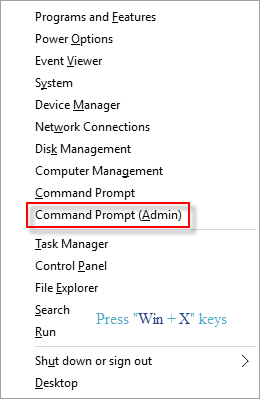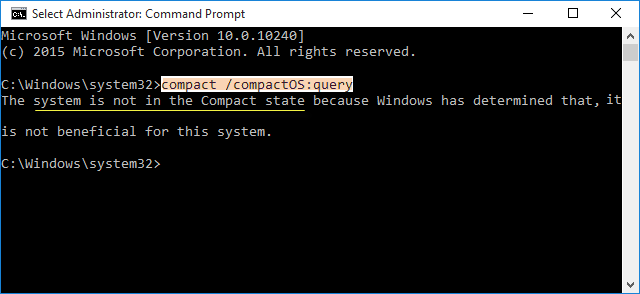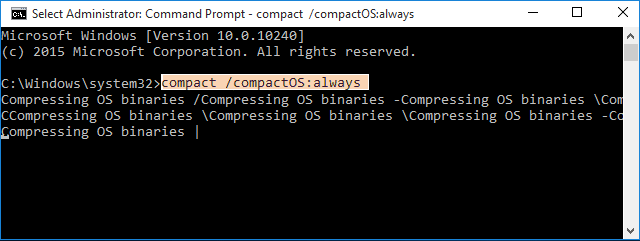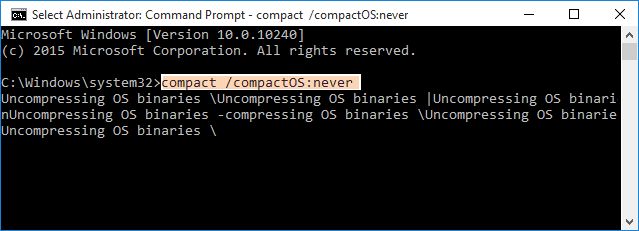To optimize storage on your Windows 10 device, you can utilize the Compact OS feature to compress operating system files, including desktop applications, thereby freeing up valuable disk space.
Compact OS is compatible with both UEFI-based and BIOS-based devices, allowing for the compression of operating system files. To minimize risks, it's advisable to back up your system and files before activating Compact OS.
Step 1: Open Command Prompt with administrative privileges.

Step 2: To query the current system compact state, execute the following command and press Enter.
compact /compactOS:query

This will display the current compact state of your system. If it's not compressed, proceed to Step 3 to enable compression.
Step 3: To compress Windows 10 OS files, run the command below and hit Enter.
compact /compactOS:always

To decompress Windows 10 OS files, use the following command:
compact /compactOS:never

Power Loss: Sudden power loss during the compression or decompression process may render your system unbootable or unrecoverable. Therefore, it's crucial to perform a complete backup before initiating the process and ensure your computer is connected to a power source.
Performance Impact: While Compact OS can save disk space, there's a theoretical concern about potential performance degradation. However, in practice, no significant performance loss has been observed.